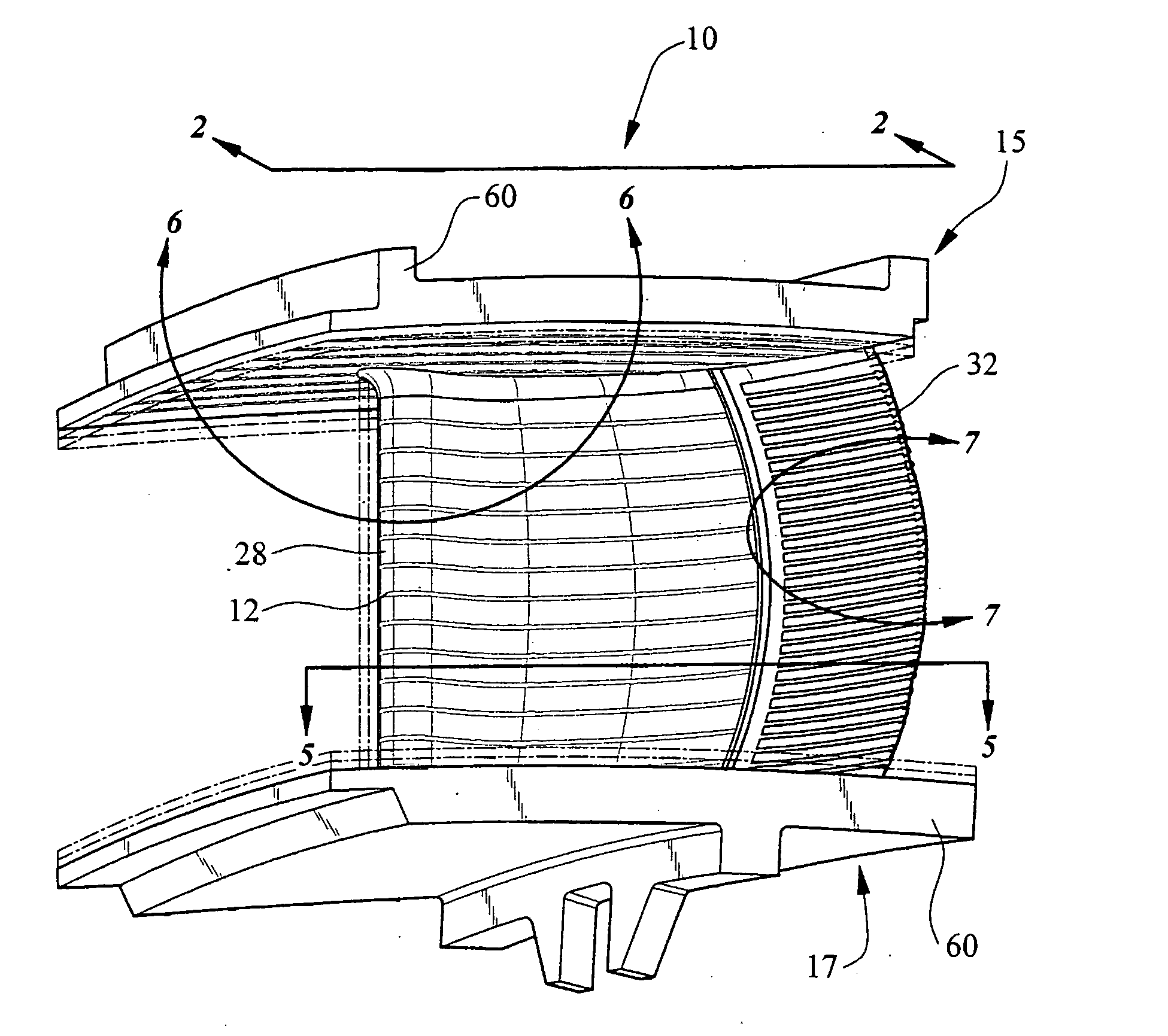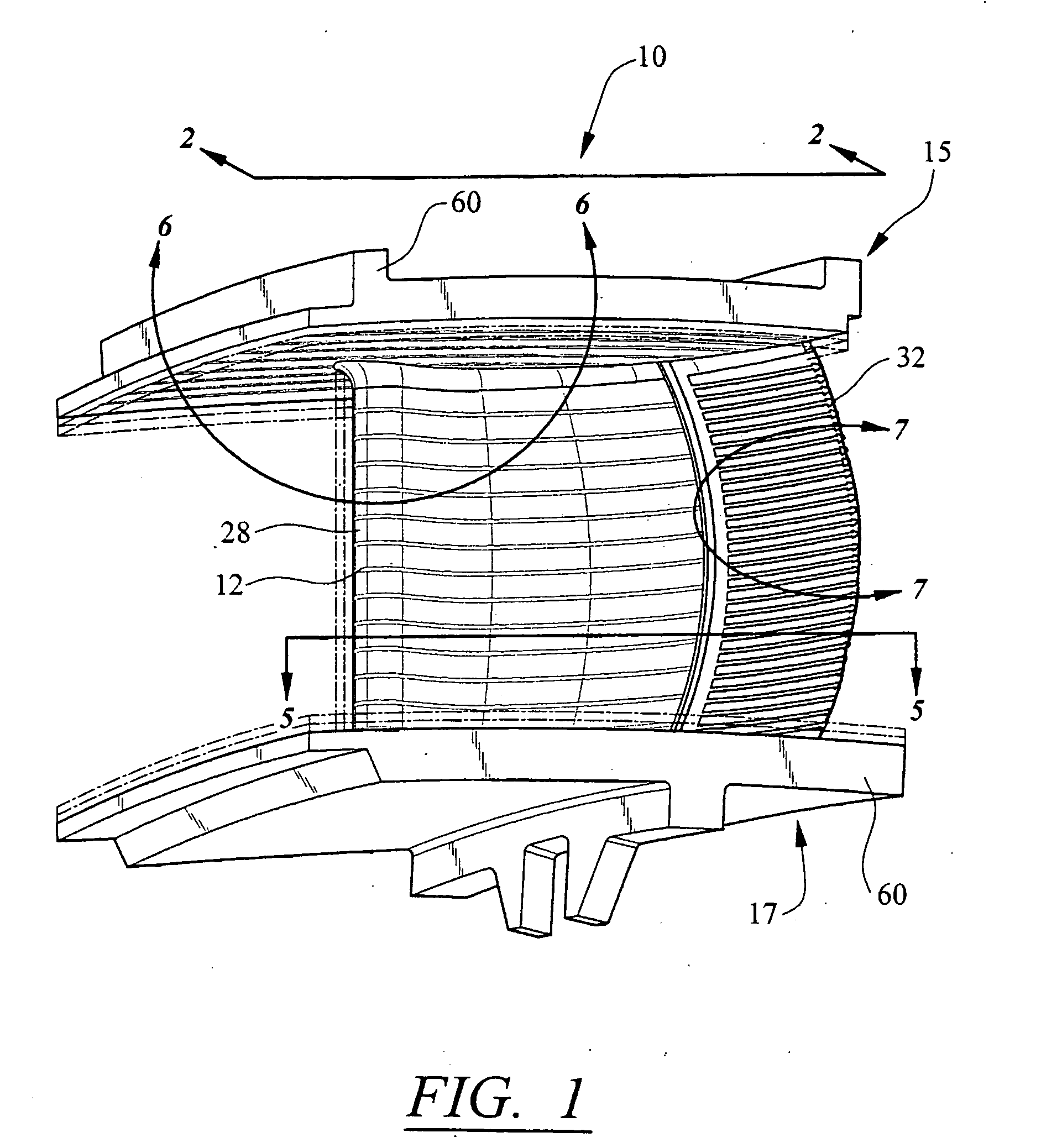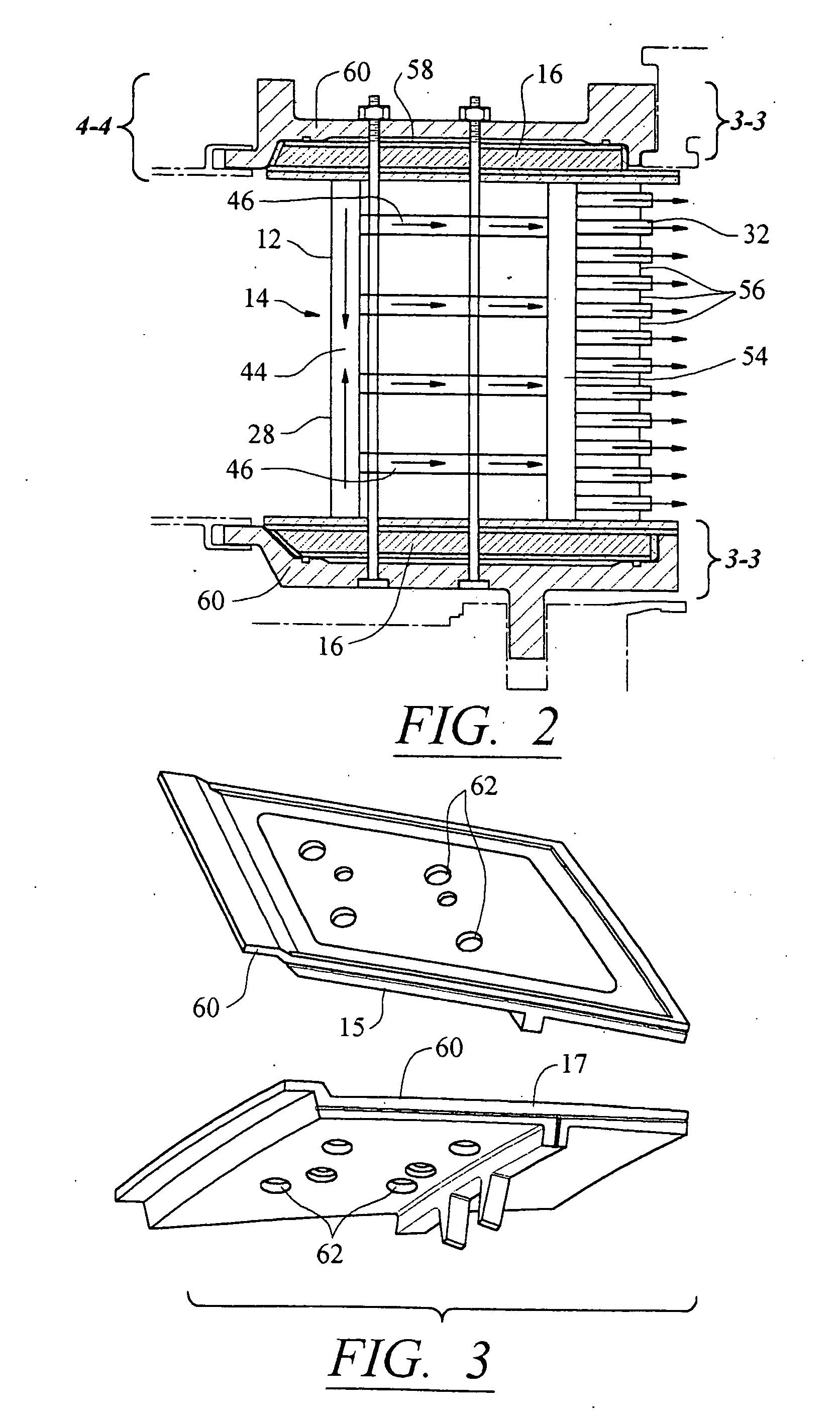Cooling fluid preheating system for an airfoil in a turbine engine
- Summary
- Abstract
- Description
- Claims
- Application Information
AI Technical Summary
Benefits of technology
Problems solved by technology
Method used
Image
Examples
Embodiment Construction
[0025] As shown in FIGS. 1-7, this invention is directed to a platform cooling system 10 usable to preheat cooling fluids in a turbine engine. The platform cooling system 10 is particularly useful in composite airfoils 12 in which temperature gradients cause layers of the airfoil 12 to delaminate and bonds between adjacent layers to break. In addition, the platform cooling system 10 may be incorporated with an internal cooling system 14 in the airfoil 12 such that the airfoil is cooled with cooling air in a serial cooling manner such that cooling fluids passed through the platform cooling system 10 flow through the airfoil 12 without being supplemented by lower temperature cooling air while in the airfoil 12.
[0026] The platform cooling system 10 may receive cooling fluids from a compressor (not shown) or other source, increase the temperature of the cooling fluids, and pass the cooling fluids on to a cooling system 14 in the airfoil 12 with a temperature that is greater than a temp...
PUM
 Login to View More
Login to View More Abstract
Description
Claims
Application Information
 Login to View More
Login to View More - R&D
- Intellectual Property
- Life Sciences
- Materials
- Tech Scout
- Unparalleled Data Quality
- Higher Quality Content
- 60% Fewer Hallucinations
Browse by: Latest US Patents, China's latest patents, Technical Efficacy Thesaurus, Application Domain, Technology Topic, Popular Technical Reports.
© 2025 PatSnap. All rights reserved.Legal|Privacy policy|Modern Slavery Act Transparency Statement|Sitemap|About US| Contact US: help@patsnap.com



